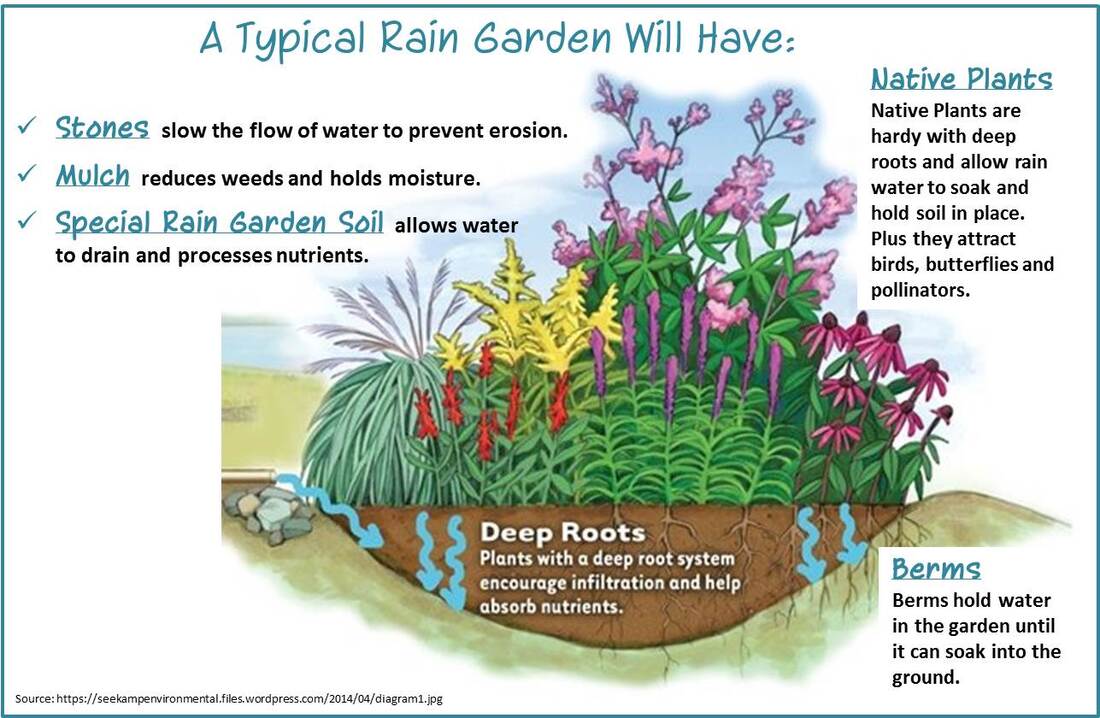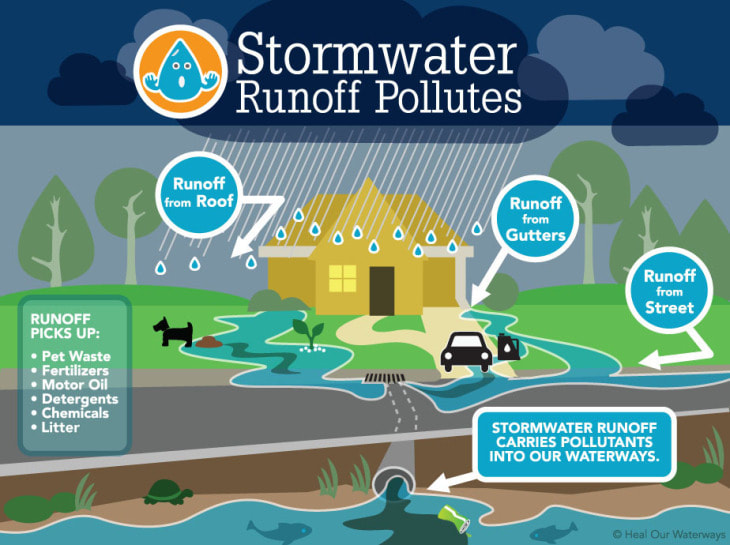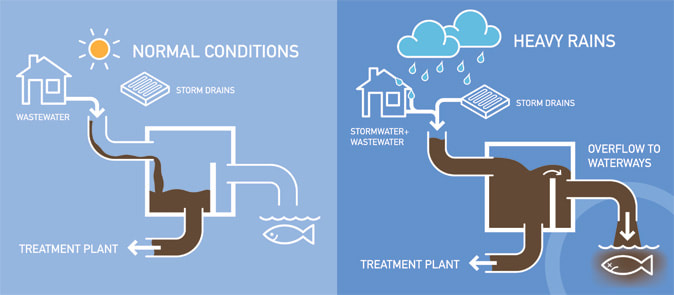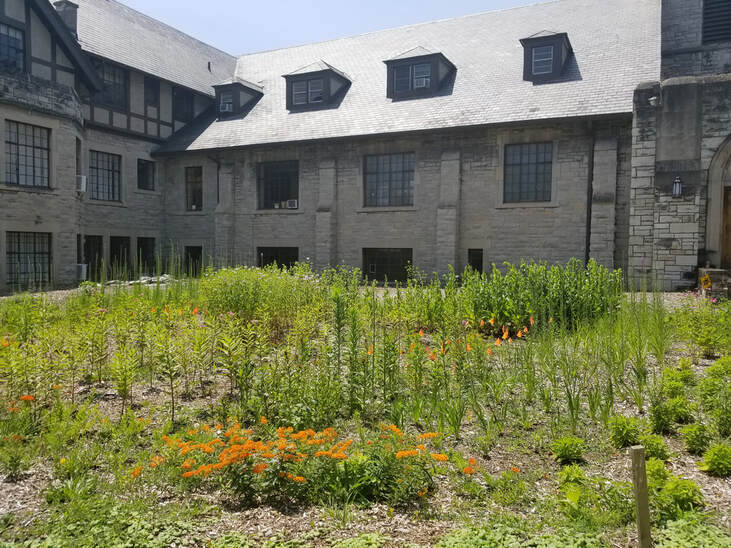WHAT IS A RAIN GARDEN?
A rain garden is a garden in a shallow depression, either natural or constructed, that is strategically located to capture rainwater from roofs, driveways, and sidewalks and planted with deep-rooted native grasses, flowers and shrubs that like water. The rain garden temporarily stores stormwater, slowing runoff and reducing flooding, while providing habitat for bees and other pollinators. The hardy native plants and soil filter the stormwater naturally, reducing water pollution.
Rain gardens can be designed in all shapes and sizes and may include formally arranged plants, fields of wildflowers, stone culverts and paths, and other beautiful landscaping features.
Rain gardens can be designed in all shapes and sizes and may include formally arranged plants, fields of wildflowers, stone culverts and paths, and other beautiful landscaping features.
WHY DO RAIN GARDENS MATTER?
It’s all about runoff. Stormwater runoff is the most significant threat to the quality of our Great Lake and can impact homeowners and local municipalities both environmentally and financially. As green spaces are paved over for highways, housing developments, shopping centers, and parking lots, the amount of hard, or impervious, surfaces continues to grow and prevents rainwater from soaking into the ground. During major storm events, rainwater can exceed the capacity of the ditches and storm sewers that our cities use to safely convey it to our rivers and lakes, causing severe flooding. The increased runoff also picks up nutrients and other contaminants - oil, grease, lawn chemicals, metals, bacteria and sediment -as it flows across fields, lawns and impervious surfaces and enters our waterways untreated. Rain gardens are something that we can all do about it!
In many of our cities where the storm and sanitary sewer systems are combined in the same pipe underground, there is additional cause for concern: rainwater can cause an overload of the combined system, resulting in sewage overflow into rivers and streams and sometimes streets, yards and basements. As we have more excessive rain events and the volume of stormwater runoff is increased, this occurs more frequently and can become very costly for local communities.
To learn more about how the City of Toledo is reducing Combined Sewer Overflows to protect our local waterways, visit the Toledo Waterways Initiative at https://www.toledowaterwaysinitiative.com/.
To learn more about how the City of Toledo is reducing Combined Sewer Overflows to protect our local waterways, visit the Toledo Waterways Initiative at https://www.toledowaterwaysinitiative.com/.
WHAT ARE THE BENEFITS?
A properly installed rain garden can benefit any site, public or private! A rain garden:
Reduces flooding
Stores rainwater temporarily
Slows runoff near its sources
Encourages rainwater to soak into the ground
Removes pollution carried by stormwater
Provides habitat for butterflies, bees, and other pollinators
Provides low-maintenance property beautification
Promotes health and wellness with time outside
Reduces flooding
Stores rainwater temporarily
Slows runoff near its sources
Encourages rainwater to soak into the ground
Removes pollution carried by stormwater
Provides habitat for butterflies, bees, and other pollinators
Provides low-maintenance property beautification
Promotes health and wellness with time outside
THE BOTTOM LINE: RAIN GARDENS MAKE A DIFFERENCE
Polluted waterways not only harm our environment, they can negatively impact our health and the vitality of our local economy. Rain gardens aid in combating these problems in addition to serving an aesthetic purpose and are beneficial to local communities. Together we can protect our community and local waterways one rain garden at a time.






